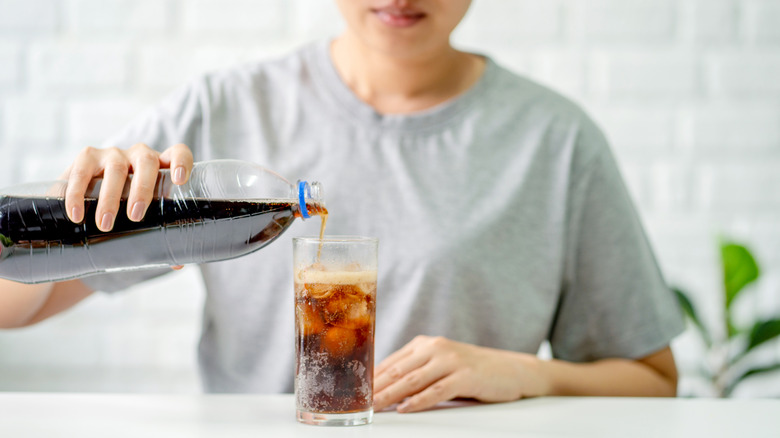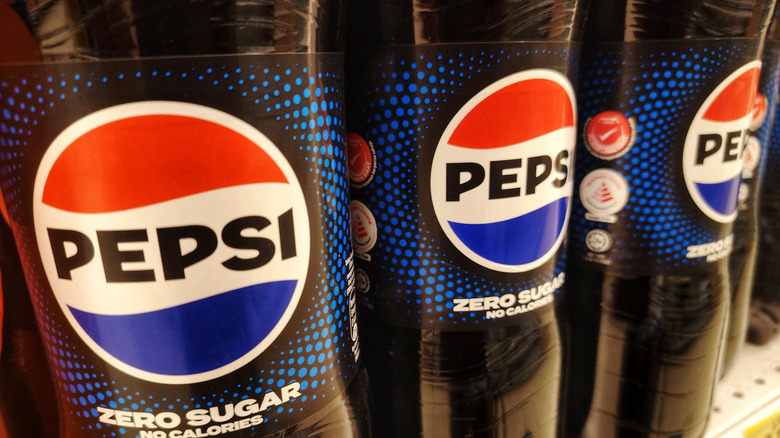The Zero-Sugar Soda That Contains Significantly More Caffeine In Canada
We may receive a commission on purchases made from links.
While traveling, we're sometimes surprised when picking up a product that looks pretty much the same as the one at home, only to find it's a little different. In the U.S., the best-known example is the difference between American and Mexican Coke, thanks to the use of cane sugar in the latter. Another is Cadbury chocolates, which taste different in the U.K. compared to in the U.S. Sometimes these changes reflect the food preferences of specific regions, which is why you'll enjoy different McFlurries at McDonald's around the globe. It may also, as in the case of Pepsi Zero Sugar, reflect corporate decisions that differ from region to region. That's why there's nearly twice as much caffeine in the Canadian sugar-free cola these days as in the American version.
In early 2023, PepsiCo Beverages North America announced it was changing the formula for Pepsi Zero Sugar in the U.S. (the company also announced it was swapping Sierra Mist for Starry). Billed as "new and improved," the change involved several tweaks: removing ginseng from the ingredients, adjusting the artificial sweetener balance, and reducing caffeine.
But here's the kicker: The new formula is found on American store shelves, but north of the border, you'll discover all the extra caffeine is still present. When the reformulated soda launched, PepsiCo Canada declared on X, formerly known as Twitter, that there were no plans to cut back on caffeine or change Pepsi Zero Sugar in Canada. So if you crave more caffeine in your diet soda, head north (or order the Canadian version from Amazon).
Canadian Pepsi Zero Sugar hits different
According to reports, the American formula changes were part of the ongoing race against Coca-Cola Zero Sugar. That battle continues, with the brand relaunching its classic Pepsi Challenge during Super Bowl LIX, this time pitting the two zero-sugar competitors against each other in blind tastings. But PepsiCo Canada, a distinct branch of the company, with roots in Quebec dating back to 1934, explained on X that the company regularly evaluates the feedback it gets from customers, which can lead to different formulas for different markets.
Pepsi Zero Sugar has experienced quite the journey since it launched as Diet Pepsi Max in 2007. The product was renamed Pepsi Max in 2009 and then Pepsi Zero Sugar in 2016 (it's still called Pepsi Max in Australia). The latest name change also came with the reintroduction of aspartame as a sweetener, in contrast with Diet Pepsi. In fact, it's the mix of artificial sweeteners used that differentiates the "diet" colas from the "zero sugar" versions.
So for now, a 12-fluid-ounce can of Pepsi Zero Sugar in the U.S. has 38 milligrams of caffeine, while the same-size product in Canada boasts the original 69 milligrams (along with ginseng as an ingredient). Of course, PepsiCo Canada could decide to change the formula, so always check the back of the can, where the caffeine content is listed below the nutrition label.

